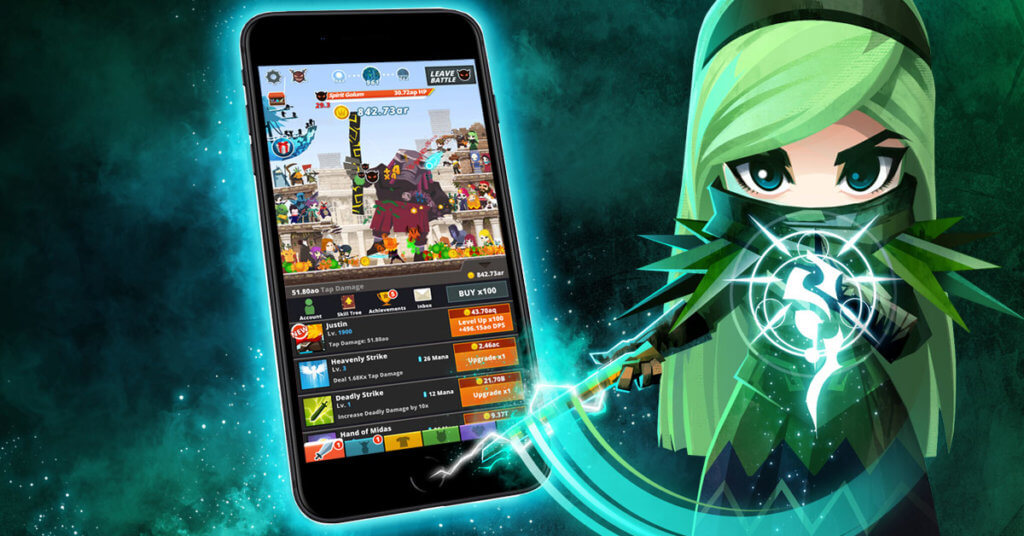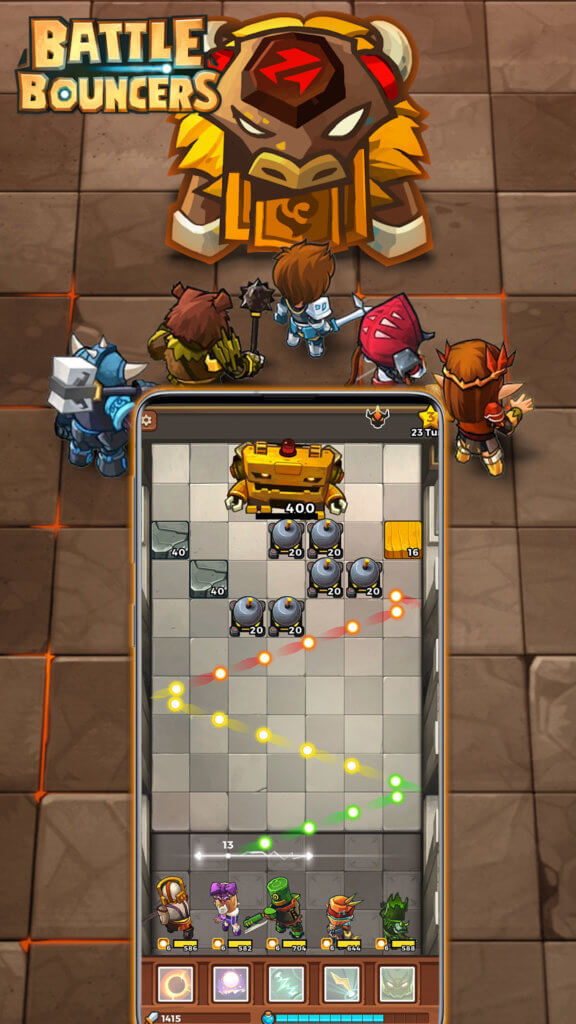Industry leaders’ growth marketer resolutions for 2020: Game Hive
If you’re like most people, you dumped your New Year’s resolutions on January 19th. But if you’re a growth marketer, you’re just getting started. This year has a lot in store for our customers—and, we’re right there with them as they try new things and look to scale.
We touched base with marketing leaders from the industry to find out new tactics on the horizon and ones they discarded with the old year.
First, we checked in with Mary Kim, Head of Growth at Game Hive located in Toronto, Canada. Mary currently leads the growth team in UA and Ads Monetization, working on titles such as Tap Titans, Beat the Boss, and Tap Tycoon. Mary entered the mobile gaming industry working at one of Europe’s largest gaming studios, acquiring users for desktop and mobile.

What marketing strategies or tactics will you start to test in 2020?
One of the biggest struggles we’ve had for a long time is attributing impression-level ad revenue in our reporting. Now we’re finally getting to a point where we’ll be able to do this. Our mediation partner, AdMob, is enabling this for us and we’re in the process of kicking things off. So now, whatever impressions we get on our ad side will be tracked more accurately at the user level. Along with the cost data from Singular, we’ll be able to get the whole 360° picture.
Are there any new ad channels you’ll start testing?
This is something we’re constantly doing. In fact, I’d say it’s really difficult to not test, given that the duopolies take the majority share of ad spend. We wouldn’t want to be in a position where something happens on the back end with the algorithms and performance suffers. So, we always like to allocate part of our budget to testing.
Last year we dipped our toes into more DSPs. Now, we’re getting much more comfortable sharing data with our new networks. With some partners, it’s been going extremely well. For instance, we’ve found that with the DSPs we’ve had the most success with—although we’re getting the same inventory as we would with, for example, a rewarded video network—performance is better because they use different machine learning algorithms that optimize for high-value users, rather than optimizing for ad placements.
We’ll continue to do this in 2020 for sure!
We’re finding that the marketers leading the way in full-funnel performance marketing are doing exactly what you’re doing. They’re setting aside budget specifically for testing, on a quarterly if not monthly basis.
Are there any other ad channels you’ve been testing?
TikTok’s one that we’re trying out. In the past, we thought maybe the audience would’ve been too young. But we realized that these days, the platform has evolved and the audience is not all that young. Since many of our users are male and there are more females on the TikTok platform, we were also worried that it may not be a good fit if we couldn’t reach our target demographic. Interestingly enough, we’ve discovered that there are more female content creators but more men watching the content. So we thought okay—we sure don’t have a problem with that!
Interesting. One of our industry analysts looked at aggregate data across industries to see what’s working and what’s not, so that we’re providing that information to our customers. One thing he discovered was that ad spend on TikTok tripled from May to November 2019. And obviously, marketers allocate budget like that when something’s working. Our ROI Index speaks to that as well. What about creatives? Are there any new tactics you’re trying out, like creative optimization, using new ad formats, or something else?
Yes! At least for us, 2019 was a huge year for creatives. We were able to crank out so many, so I guess you could say it was more a matter of quantity over quality in 2019. This year, we want to focus on quality over quantity. That includes getting more 3D assets, and coming up with faster video creation but with quality in mind.

Everyone’s been talking about video, video, video for the last 5-7 years. Obviously it’s the most engaging ad format. But, I think for a very long time teams struggled with the production aspect of it because it’s costly and time-consuming. It feels like you guys are figuring out ways to streamline production and get your 3D templates ready to not only raise the quality, but to also get more high-quality assets out there.
Are there any new incentives you’re thinking of testing? Things like referral codes—we know you already do rewarded video. Which ones are you already doing that you’d like to buckle down on more? Or new ones you’d like to try out?
We’ve really started to invest more in re-engagement, especially because Tap Titans 2 has developed a wide user base. Keeping that in mind—and since re-engagement works so well—for those players that are coming back, we asked ourselves, what can we do to make them continue to do so? Right now we have deeplinks, but it doesn’t actually pinpoint a specific moment in the game or give them an actual incentive to come back. So, that’s been something we really want to highlight and focus on: giving them an undeniable reason to return, so we’ll give you some diamonds, or give you some rare legendary equipment so that you come back and you enjoy the game even more.
Is there any new KPI you’d like to start measuring and optimizing against?
Yes—we’ve been trying to test this already, but you know how many advertisers like to optimize towards purchases and transactions? We feel that even before the users get to that, those who indicate that they’re going to be high-value is by whether they’re using hard currency in our game. So, a first-time hard currency user, or even someone coming in on a transaction-by-user basis, will be higher value for us. Hard currency is the main one we’re trying to test now.
You’re obviously automating your reporting with Singular. Are there other automations, like bidding optimizations, that you’re either already doing or plan to do?
Yes—at the moment we’re leveraging other partners to help us do this, but right now it’s only based on rules that we set. For example, here are my KPIs and the benchmarks I want to reach. If it doesn’t reach it, then decrease the bid by X, or lower the budget caps. However, it only goes so far if it’s just based on rules and sometimes dangerous if there are extreme outliers. This goes alongside a bigger project we’re working on, which is rebuilding our pLTV models to leverage user-level data to detect behavioral trends. This will allow us to predict which users will become high-LTV players by understanding what it means to have a particular session length or if they unlock certain achievements. By doing this we can increase our accuracy and feed our own algorithms more data. Ultimately, identifying this on a user level will really help our marketing automation.
Are there any marketing strategies or tactics that you’re doubling down on in 2020, such as creative optimization, or anything else?
I think we’ll be doing much more partner testing. It’s interesting how a partner can surprise you once you give them a lot of love and care. And then, they tend to be one of the highest performers when some of your larger partners don’t perform well. Also, we’ll be testing more aggressively, and “failing fast” to learn quickly.

Are there any strategies/tactics that you’re going to leave behind in the last decade?
I think we’ll be focusing less on optimizing towards CPI. That was somewhat the case during 2019, but every user is worth a different amount in terms of LTV. Every channel is different, too, as well as every environment. So, we do want to get away from thinking we have to have a low CPI because the risk is so high, and just be a little bit more lenient on that. Even if the ROAS isn’t there but they’re hitting the in-game event, then we know that’s a signal to them being a better user eventually. So, what we want to avoid is looking too short-term on a CPI basis, and use that less as a strategy in 2020.
This is a bit controversial, but are there any channels you want to stop testing?
I won’t mention which partner, but there are certain networks you hear in the industry are performing really well, and sometimes you have to accept that your game or app isn’t the right fit for that audience or inventory and move on. We’ve also tried really hard and spent a lot of budget on some networks where we realize it’s just not going to work. In that case, we learn to let go and instead, invest in other platforms.
Have there been ad networks that you’ve decided to stop working with because you found that they have a lot of fraud?
Actually, we’re pretty good in terms of fraud detection. The networks we’ve been working with have also been pretty understanding whenever there’s a fraud claim. I wouldn’t say that’s the reason why we’ve stopped using an ad network. We’re lucky to say that! But we did work with some networks in 2019 where fraud was a big issue, where up to 30% of the total traffic was fraud. In that case, you really have to try to get that money back. But, as long as the network is willing and accepting of those changes, and hear you out, I don’t think there’s any reason to pause them if they’re otherwise providing good traffic.
That makes complete sense. And I think that a lot of the ad networks are interested in fraud prevention and what other industry leaders are doing around prevention as well, because they don’t want networks to be fraudulent. For the most part, these ad networks know that fraud can impact their reputation and they want help to stop it. Fraudsters are constantly evolving. We have to be willing to share your solution with ad networks—teaching them, presenting data. That’s the best bet for everyone in the industry, especially marketers.
To add to that, Singular has been amazing, because we’ve detected so much fraud, like APK fraud especially. We have so many APK downloads out there, in aggregate. To be able to have that capability and categorize these as a separate source—to be able to see all the installs that aren’t from Google Play, we’ve been able to detect fraud down to the version. So, if your app version is at 4.0 but you’re still seeing installs coming from 3.0, then you know there’s something really, really fishy going on. To be able to customize that? Oh my gosh—it’s helped a lot. I really, really like that feature.
Love it! That’s music to our ears. Mary, this has been a great conversation. Thank you so much.
About Game Hive: Founded in 2009, Game Hive is a pioneer in creating the best game experiences across multiple mobile platforms. With hit titles generating 200+ million downloads, Game Hive strives to simply make games the way they dreamed about when they were kids.
Stay up to date on the latest happenings in digital marketing


